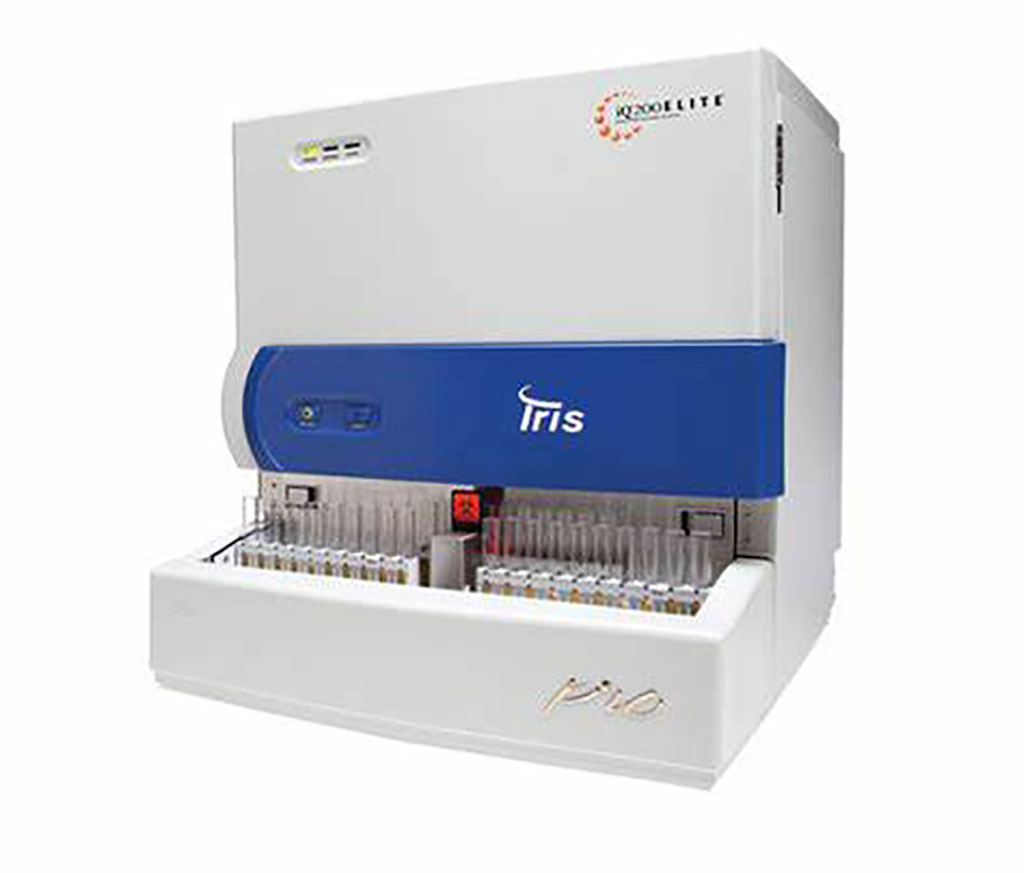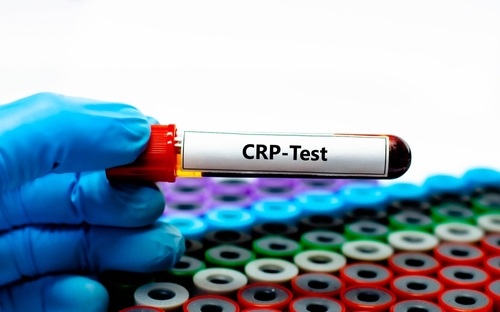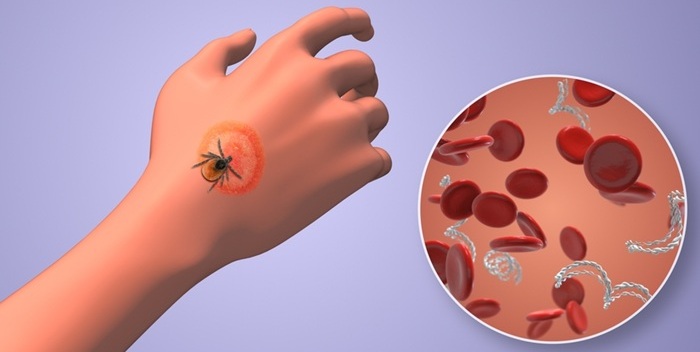Faster Method Diagnoses Pediatric Urinary Tract Infections
|
By LabMedica International staff writers Posted on 01 Aug 2022 |

Urinary tract infections (UTIs) affect the urinary tract, including the bladder (cystitis), urethra (urethritis) or kidneys (kidney infection). UTIs may be treated with antibiotics, but they're not always needed.
UTIs are common in children and when left untreated can cause acute distress, septic shock, and even kidney damage. The gold standard for diagnosing the condition, urine culture, is slow and labor-intensive for laboratory staff, leading doctors to sometimes prescribe antibiotics inappropriately before getting results, thus contributing to the rise of antibiotic resistance.
Biomedical Scientists at the Nationwide Children's Hospital (Columbus, OH, USA) investigated the association between urinalysis results and those of concurrent urine cultures, and to assess the accuracy of a published prediction model for the results of urine culture in a pediatric population. The study was a retrospective chart review of 5,535 children who previously underwent both urinalysis and urine culture for UTI and carried out at the hospital from January 2019 to December 2020. The study population had a median age of 7 years (mean = 9), was 69% female, and of those with positive urine cultures, 85.2% were female.
Dipstick and microscopic sediment urinalysis were performed on an iQ200 Automated Urine Microscopy Analyzer (Beckman Coulter, Brea, CA, USA). Positive urine culture was defined as ≥50,000 colony-forming units/mL of a urinary pathogen. To evaluate their method's performance in children, the team used it to analyze data from the medical records of the children, they entered their age, sex, risk for UTI, and urinalysis results into their test's algorithm to see how accurately it predicted their urine culture results. Six variables were selected for the prediction model UTOPIA equation: ×1:age UTI risk, ×2:sex, ×3:nitrite, ×4:leukocyte esterase (LE), ×5:white blood cell count (WBC) and ×6:grade of bacteria with ×2-×4 and ×6 being categorical.
The investigators reported that the UTOPIA value exhibited an area under the ROC curve value of 0.825, which is significantly higher (P<0.001) than the individual components for ages 0.546 (0.52-0.57), sex 0.575 (0.56-0.59) nitrite 0.618 (0.60-0.63), LE 0.757 (0.74-0.78), the grade of bacteria 0.664 (0.64-0.69), and the WBC count 0.776 (0.75-0.80). The closer the ROC value was to 1, the more accurate the testing strategy.
Jingcai Wang, MD, PhD, CC(NRCC), SH(ASCP)MLS, a Certified Medical Laboratory Scientist and senior author of the study, said, “The test represents a simple way to predict urine culture results. It can potentially reduce unnecessary urine cultures, save money, and reduce use of unnecessary antibiotics in children.”
The authors concluded that the predictive model UTOPIA value demonstrated good diagnostic performance for predicting urine culture results and possibly reducing unnecessary urine culture and antibiotic use in a retrospective pediatric population. The study was presented on July 27, 2022 at the AACC 2022 meeting held in Chicago, IL, USA.
Related Links:
Nationwide Children's Hospital
Beckman Coulter
Latest Microbiology News
- Rapid Assay Identifies Bloodstream Infection Pathogens Directly from Patient Samples
- Blood-Based Molecular Signatures to Enable Rapid EPTB Diagnosis
- 15-Minute Blood Test Diagnoses Life-Threatening Infections in Children
- High-Throughput Enteric Panels Detect Multiple GI Bacterial Infections from Single Stool Swab Sample
- Fast Noninvasive Bedside Test Uses Sugar Fingerprint to Detect Fungal Infections
- Rapid Sepsis Diagnostic Device to Enable Personalized Critical Care for ICU Patients
- Microfluidic Platform Assesses Neutrophil Function in Sepsis Patients
- New Diagnostic Method Confirms Sepsis Infections Earlier
- New Markers Could Predict Risk of Severe Chlamydia Infection
- Portable Spectroscopy Rapidly and Noninvasively Detects Bacterial Species in Vaginal Fluid
- CRISPR-Based Saliva Test Detects Tuberculosis Directly from Sputum
- Urine-Based Assay Diagnoses Common Lung Infection in Immunocompromised People
- Saliva Test Detects Implant-Related Microbial Risks
- New Platform Leverages AI and Quantum Computing to Predict Salmonella Antimicrobial Resistance
- Early Detection of Gut Microbiota Metabolite Linked to Atherosclerosis Could Revolutionize Diagnosis
- Viral Load Tests Can Help Predict Mpox Severity
Channels
Clinical Chemistry
view channel
Chemical Imaging Probe Could Track and Treat Prostate Cancer
Prostate cancer remains a leading cause of illness and death among men, with many patients eventually developing resistance to standard hormone-blocking therapies. These drugs often lose effectiveness... Read more
Mismatch Between Two Common Kidney Function Tests Indicates Serious Health Problems
Creatinine has long been the standard for measuring kidney filtration, while cystatin C — a protein produced by all human cells — has been recommended as a complementary marker because it is influenced... Read moreMolecular Diagnostics
view channel
Pinprick Blood Test Could Detect Disease 10 Years Before Symptoms Appear
Many serious conditions begin silently years before symptoms appear, yet routine screening rarely detects these early physiological shifts. A powerful new solution is emerging: pinprick blood tests driven... Read more
Refined C-Reactive Protein Cutoffs Help Assess Sepsis Risk in Preterm Babies
Early-onset sepsis (EOS) is a dangerous bloodstream infection that appears in the first three days of life, yet its early symptoms resemble many benign newborn conditions. To support urgent treatment decisions,... Read more
Blood Test Accurately Detects Brain Amyloid Pathology in Symptomatic Patients
New research has reinforced the use of a novel blood test as a highly accurate tool for detecting brain amyloid pathology in symptomatic patients, helping healthcare professionals in diagnosing Alzheimer’s disease.... Read moreHematology
view channel
Platelet Activity Blood Test in Middle Age Could Identify Early Alzheimer’s Risk
Early detection of Alzheimer’s disease remains one of the biggest unmet needs in neurology, particularly because the biological changes underlying the disorder begin decades before memory symptoms appear.... Read more
Microvesicles Measurement Could Detect Vascular Injury in Sickle Cell Disease Patients
Assessing disease severity in sickle cell disease (SCD) remains challenging, especially when trying to predict hemolysis, vascular injury, and risk of complications such as vaso-occlusive crises.... Read more
ADLM’s New Coagulation Testing Guidance to Improve Care for Patients on Blood Thinners
Direct oral anticoagulants (DOACs) are one of the most common types of blood thinners. Patients take them to prevent a host of complications that could arise from blood clotting, including stroke, deep... Read moreImmunology
view channel
Gene Signature Test Predicts Response to Key Breast Cancer Treatment
DK4/6 inhibitors paired with hormone therapy have become a cornerstone treatment for advanced HR+/HER2– breast cancer, slowing tumor growth by blocking key proteins that drive cell division.... Read more
Chip Captures Cancer Cells from Blood to Help Select Right Breast Cancer Treatment
Ductal carcinoma in situ (DCIS) accounts for about a quarter of all breast cancer cases and generally carries a good prognosis. This non-invasive form of the disease may or may not become life-threatening.... Read moreMicrobiology
view channel
Rapid Assay Identifies Bloodstream Infection Pathogens Directly from Patient Samples
Bloodstream infections in sepsis progress quickly and demand rapid, precise diagnosis. Current blood-culture methods often take one to five days to identify the pathogen, leaving clinicians to treat blindly... Read more
Blood-Based Molecular Signatures to Enable Rapid EPTB Diagnosis
Extrapulmonary tuberculosis (EPTB) remains difficult to diagnose and treat because it spreads beyond the lungs and lacks easily accessible biomarkers. Despite TB infecting 10 million people yearly, the... Read more
15-Minute Blood Test Diagnoses Life-Threatening Infections in Children
Distinguishing minor childhood illnesses from potentially life-threatening infections such as sepsis or meningitis remains a major challenge in emergency care. Traditional tests can take hours, leaving... Read more
High-Throughput Enteric Panels Detect Multiple GI Bacterial Infections from Single Stool Swab Sample
Gastrointestinal (GI) infections are among the most common causes of illness worldwide, leading to over 1.7 million deaths annually and placing a heavy burden on healthcare systems. Conventional diagnostic... Read morePathology
view channel
AI Tool Predicts Treatment Success in Rectal Cancer Patients
Artificial intelligence (AI) may soon help clinicians identify which rectal cancer patients are likely to respond well to treatment, using only the routine biopsy slides already obtained at diagnosis.... Read more
Blood Test and Sputum Analysis Predict Acute COPD Exacerbation
Chronic obstructive pulmonary disease (COPD) remains a major contributor to global illness, largely driven by cigarette smoking and marked by irreversible lung damage. Acute exacerbations can accelerate... Read more
AI Tool to Transform Skin Cancer Detection with Near-Perfect Accuracy
Melanoma continues to be one of the most difficult skin cancers to diagnose because it often resembles harmless moles or benign lesions. Traditional AI tools depend heavily on dermoscopic images alone,... Read more
Unique Immune Signatures Distinguish Rare Autoimmune Condition from Multiple Sclerosis
Myelin oligodendrocyte glycoprotein antibody–associated disease (MOGAD) is a rare autoimmune disorder in which the immune system attacks the myelin sheath in the central nervous system. Although symptoms... Read moreTechnology
view channel
AI Saliva Sensor Enables Early Detection of Head and Neck Cancer
Early detection of head and neck cancer remains difficult because the disease produces few or no symptoms in its earliest stages, and lesions often lie deep within the head or neck, where biopsy or endoscopy... Read more
AI-Powered Biosensor Technology to Enable Breath Test for Lung Cancer Detection
Detecting lung cancer early remains one of the biggest challenges in oncology, largely because current tools are invasive, expensive, or unable to identify the disease in its earliest phases.... Read moreIndustry
view channel
Abbott Acquires Cancer-Screening Company Exact Sciences
Abbott (Abbott Park, IL, USA) has entered into a definitive agreement to acquire Exact Sciences (Madison, WI, USA), enabling it to enter and lead in fast-growing cancer diagnostics segments.... Read more







 assay.jpg)

 Analyzer.jpg)











